MARKETING
How to Target Millennials Through Paid Ads

Millennials are something of a mythical bunch in society. Much is said about their behaviors and preferences, yet many of the stories seem to contradict. Even narrowing down what age group millennials represent is challenging, and many people have differing views.
This confusing picture makes it challenging to target millennials through paid ads, but don’t let it put you off. Let’s look at who millennials are and how you can use that data to create targeted ads that will convince them to convert.
When Were Millennials Born?
Millennials are defined as “people reaching young adulthood in the early 21st century.” The Pew Research Center further defines the group as those born between 1981 and 1996, though that time period has shifted over time.
Millennials are now the most populous group in the US, making up 21.97 percent of the population, and this trend is set to continue well into the 2050s.
This makes understanding millennials crucial to creating paid ads that actually drive revenue.
What Makes Millennials Unique?
One of the key things that make millennials unique is their relationship with technology.
Millennials were born into a world where modern technology hadn’t yet taken hold in daily life like it has today. However, they did grow up in an age where technology was transforming the way we live, so they aren’t new to it.
Generation X adapted to digital technology as adults, and Generation Z have never known life without the smartphone or super-fast internet, but millennials have a foot in both worlds.
The rapid shift to a digital world means millennials’ lives have followed a different path to those generations before and after them. This has influenced them in many different ways.
Of course, it’s hard to ascribe common characteristics to such a diverse group, but some traits seem to be common in this generation, including:
- connected
- tech-savvy
- curious
- in need of instant gratification
- collaborative
- seek transparency
- crave authenticity
- care about diversity and sustainability
Keep in mind; this is just a rough picture of millennials. There are still individual people with unique politics, education levels, likes, and dislikes. However, these insights need to inform your paid ad strategy.
Why You Should Target Millennials Through Paid Ads
If you successfully target millennials through paid ads, you’ll engage 21.97 percent of the US population and 2 billion people worldwide. While millennials are more receptive to certain products, this is a huge market for virtually any business.
However, millennials pose several challenges to marketers. First, it is a large, diverse group, and secondly, they’re so accustomed to advertising that some think they’ve become immune to it.
Nobody is immune to advertising, and millennials click paid ads every day. The trick is finding the right strategy.
It starts with understanding your target audience. If your product doesn’t solve the problems millennials have or fit their view of the world, then this group shouldn’t be your primary target.
For example, businesses that provide traditional weddings and razor blade manufacturers have a notoriously difficult time advertising to millennials. This isn’t because this generation is immune to advertising, it’s because the products aren’t as closely aligned to the people’s wants and needs (think of the proliferation of beards in society today versus 20 years ago).
Instead, it’s businesses in travel, tech, fast food, and other sectors where the products match millennials’ specific pain points that are finding success.
If millennials are a key part of your target audience, then paid advertising is an effective option, because it allows you to reach these people where they’re “hanging out.” Ninety percent of millennials are on Facebook, making it exceptionally easy to reach these people with your message.
A key part of marketing is getting your message seen, and millennials give you ample chances to do this.
6 Strategies for Targeting Millennials Through Paid Ads
To successfully target millennials through paid ads, you have to remember this group is very tech-savvy, and they’ve grown up with online advertising.
They see through the cheap gimmicks and aren’t coerced into clicking for no reason. Therefore, you should focus on offering genuine value. The strategies you use to target millennials through paid ads must add to the experience, rather than just serving your own purposes.
Here’s a few ways to successfully target millennials with paid ads.
1. Run Ads on the Social Media Platforms Millennials Use the Most
The good thing about millennials is they are easy to reach. A huge percentage are active on social media, but to make the most of this, we need to understand what platforms millennials are using.
In the past, this was pretty easy. People had Facebook, Twitter, and maybe Instagram. There weren’t many other popular options. Today there are dozens of social media platforms, with new ones popping up every day.
Let’s look at what percentage of millennials use some of the most popular platforms weekly:
- Facebook: 87 percent
- Twitter: 42 percent
- Instagram: 71 percent
- Snapchat: 52 percent
- YouTube: 86 percent
- Pinterest: 42 percent
Additionally, LinkedIn’s audience is 38 percent millennials aside from these platforms, and 19 percent of millennials are using TikTok.
There are plenty of opportunities out there to target millennials through paid ads. The ability to reach this group isn’t difficult; the tricky part is getting your medium and message right.
These platforms rely on marketing revenues though, so they’re constantly innovating and finding new ways for advertisers to engage their users. For example, Pinterest Story Pins, or Instagram filters let you offer the experience millennials are looking for.
2. Create Paid Ads That Appeal to Millennial Values
Many studies point to millennials closely held values, and three that are commonly referenced are personal responsibility, diversity, and sustainability.
It’s no surprise, given that millennials make up such a large percentage of the population that these values are being highlighted more in advertising. We often see ads that reference issues that are close to millennials’ hearts, such as climate change and equality.
If your brand is active in these issues, then this is something you should be highlighting in your advertising.
Take Allbirds shoes. they entered the highly-saturated shoe market in 2015, where they faced huge competition. Through a highly-effective advertising campaign that played on their shoes’ sustainable credentials, sales have exploded, and today the company is worth $1.4 billion.
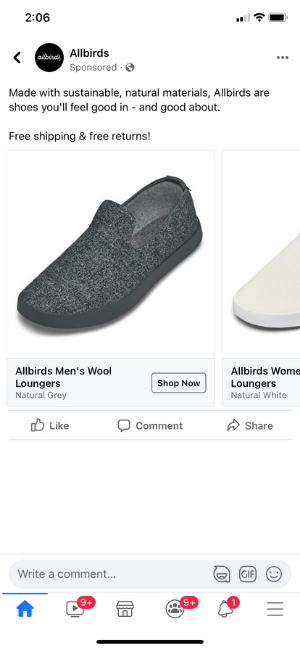
There’s no crazy marketing strategy, it’s just clear messaging that hits on people’s (millennial’s) values.
3. Be Upfront and Honest in Your Paid Ads Targeting Millennials
Millennials grew up in the digital age, and for the most part, they’ve seen all the tricks. They’re used to gimmicky advertising tricks to get their attention, and they learned to filter these out.
What cuts through the noise with millennials (and this is closely related to their values) is being honest and upfront with your advertising. This group knows if something sounds too good to be true, then it probably is, so there’s no point in over-promising and under-delivering.
This ties in with creating paid ads that appeal to millennials’ values; if you’re not serious about sustainability, or equality, or whatever it might be, then millennials are more likely to hold you to account.
This group grew up in a world of big (often faceless) corporations, but thanks to technology, they have a chance to see behind the branding and see the values behind a company. This can be a great opportunity for your advertising, but it’s got to be done in a clear, honest way.
For example, Allbirds doesn’t just use convenient slogans about sustainability in their paid ads. It’s a theme that’s central to its entire customer journey, and it delivers on its promises.
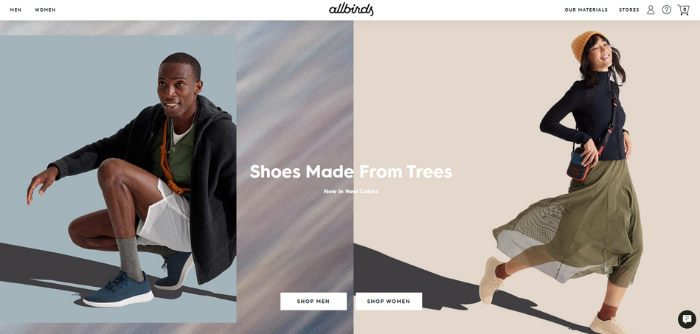
4. Create Funny Paid Ads to Target Millennials
Fifty-five percent of 13 to 35-year-olds send memes every week, and 30 percent do so daily. That’s a lot of memes!
Humor plays a huge role in millennial culture, and it’s something you can use in your paid ads. Funny ads are nothing new; just take a look back at some of the classic TV ads, but for some brands keep things very straightlaced online.
When used in content and ads, memes can have many benefits:
- They allow you to be creative.
- It’s an easy way to show your brand’s personality.
- They increase engagement.
- They’re easy to use.
- They are shareable.
People enjoy humor, and there’s certainly a place for it when you target millennials through paid ads. Just make sure your ads reflect the values of your business and resonate with your target audience. Otherwise, it can backfire.
5. Take Your Cue From Millennial Trends
The boozy brunch, avocado toast, and emojis are just some of the reported millennial trends in recent years. When 21.97 percent of the population enthusiastically gets behind something, you can bet it’s a factor to target with your marketing.
If you keep seeing something crop up in popular culture, then check it on Google Trends and see if it’s worth factoring into your marketing.
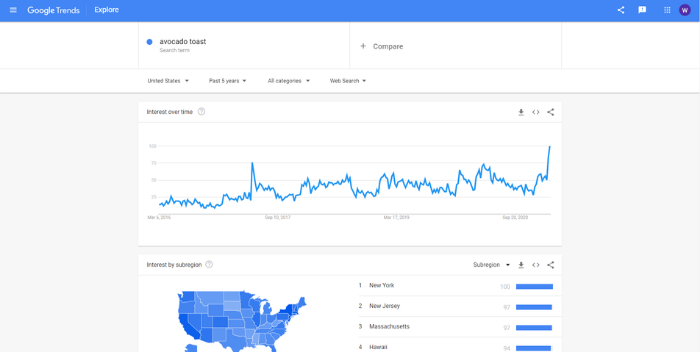
Remember that millennials are cynical consumers of advertising, so if it’s a reach to link your products to the trend, it’s probably best to leave it alone rather than look like you’re just trying too hard.
6. Ask the Millennials in Your Office for Help
One of the best ways to learn about your target audience is simply to ask them questions. Millennials now make up the largest proportion of the workforce, so there are bound to be some in your office.
Obviously, your co-workers have jobs to do, but it won’t hurt to run a few ideas by them. Millennials are a very diverse group, so they won’t be able to speak for everyone, but they might be able to give you some ideas about what works and what doesn’t with this generation.
Examples of Paid Ads Targeting Millennials
Brands are always trying to reach millennials through paid advertising, so there are lots of examples, some of which have had tremendous success, and others that are best forgotten. Let’s take a look at the best and the worst of the bunch.
The Good
Here are a few ads that nailed millennial marketing.
NFL and McDonald’s: Bad Lip Reading
This is a great example of brands capitalizing on millennial trends in a positive way.
In 2013, a series of YouTube videos found huge success by taking video footage of normal events and overlaying them with “bad lip reading.” One of the most successful videos was “The NFL: A Bad Lip Reading,” which has over 72 million views.
Rather than take offense at the light-hearted fun, the NFL embraced the trend and teamed up with McDonald’s to create their own version.
Airbnb: Belong Anywhere
Airbnb was founded in 2008 and was valued at over $100 billion when it went public in 2020. Part of its success has been a product that is closely aligned with the values of millennials, and its advertising continues to capitalize on this.
Messages such as “Let’s Keep Travelling Forward,” and “We Accept” fit perfectly with the ideals millennials respond to, and this has helped bring the company great success.
The Bad
What does it look like when millennial marketing goes wrong? Here are a few ads that missed the mark.
McDonald’s: Fish Fillet
It was widely accepted that McDonald’s missed the mark with its fish fillet ad because it’s seen as emotional manipulation.
Emotion is a big part of any ad, but it’s got to be done in the right way. This ad just seems like McDonald’s is using a child’s grief to sell its sandwiches, and that’s something millennials will see through.
Pepsi: Kendall Jenner Protest Ad
Millennials tend to feel a personal responsibility to make a positive change in the world, but brands that exploit that drive will suffer. For many people, this Pepsi ad featuring Kendall Jenner did just that.
Aired during a time of heightened tension around America, the ad seemed to trivialize the cause of the protests and struck the wrong chord with millennials.
Conclusion
Millennials are a diverse, tech-savvy group that were brought up with advertising, so it’s no surprise that it takes some fine-tuning to get your targeting right.
When you take the time to understand millennials, discover what values they hold dear, the platforms they engage with, and the types of content they respond to, then you will find you can successfully advertise to this group.
For some businesses, millennials simply won’t be part of their target market, but with this group making up over a fifth of the population, the majority of businesses are going to have to learn how to target them through paid ads.
Have you had success advertising to millennials?
See How My Agency Can Drive Massive Amounts of Traffic to Your Website
- SEO – unlock massive amounts of SEO traffic. See real results.
- Content Marketing – our team creates epic content that will get shared, get links, and attract traffic.
- Paid Media – effective paid strategies with clear ROI.
MARKETING
18 Events and Conferences for Black Entrepreneurs in 2024

Welcome to Breaking the Blueprint — a blog series that dives into the unique business challenges and opportunities of underrepresented business owners and entrepreneurs. Learn how they’ve grown or scaled their businesses, explored entrepreneurial ventures within their companies, or created side hustles, and how their stories can inspire and inform your own success.
It can feel isolating if you’re the only one in the room who looks like you.
MARKETING
IAB Podcast Upfront highlights rebounding audiences and increased innovation


Podcasts are bouncing back from last year’s slowdown with digital audio publishers, tech partners and brands innovating to build deep relationships with listeners.
At the IAB Podcast Upfront in New York this week, hit shows and successful brand placements were lauded. In addition to the excitement generated by stars like Jon Stewart and Charlamagne tha God, the numbers gauging the industry also showed promise.
U.S. podcast revenue is expected to grow 12% to reach $2 billion — up from 5% growth last year — according to a new IAB/PwC study. Podcasts are projected to reach $2.6 billion by 2026.
The growth is fueled by engaging content and the ability to measure its impact. Adtech is stepping in to measure, prove return on spend and manage brand safety in gripping, sometimes contentious, environments.
“As audio continues to evolve and gain traction, you can expect to hear new innovations around data, measurement, attribution and, crucially, about the ability to assess podcasting’s contribution to KPIs in comparison to other channels in the media mix,” said IAB CEO David Cohen, in his opening remarks.
Comedy and sports leading the way
Podcasting’s slowed growth in 2023 was indicative of lower ad budgets overall as advertisers braced for economic headwinds, according to Matt Shapo, director, Media Center for IAB, in his keynote. The drought is largely over. Data from media analytics firm Guideline found podcast gross media spend up 21.7% in Q1 2024 over Q1 2023. Monthly U.S. podcast listeners now number 135 million, averaging 8.3 podcast episodes per week, according to Edison Research.
Comedy overtook sports and news to become the top podcast category, according to the new IAB report, “U.S. Podcast Advertising Revenue Study: 2023 Revenue & 2024-2026 Growth Projects.” Comedy podcasts gained nearly 300 new advertisers in Q4 2023.
Sports defended second place among popular genres in the report. Announcements from the stage largely followed these preferences.
Jon Stewart, who recently returned to “The Daily Show” to host Mondays, announced a new podcast, “The Weekly Show with Jon Stewart,” via video message at the Upfront. The podcast will start next month and is part of Paramount Audio’s roster, which has a strong sports lineup thanks to its association with CBS Sports.
Reaching underserved groups and tastes
IHeartMedia toasted its partnership with radio and TV host Charlamagne tha God. Charlamagne’s The Black Effect is the largest podcast network in the U.S. for and by black creators. Comedian Jess Hilarious spoke about becoming the newest co-host of the long-running “The Breakfast Club” earlier this year, and doing it while pregnant.
The company also announced a new partnership with Hello Sunshine, a media company founded by Oscar-winner Reese Witherspoon. One resulting podcast, “The Bright Side,” is hosted by journalists Danielle Robay and Simone Boyce. The inspiration for the show was to tell positive stories as a counterweight to negativity in the culture.
With such a large population listening to podcasts, advertisers can now benefit from reaching specific groups catered to by fine-tuned creators and topics. As the top U.S. audio network, iHeartMedia touted its reach of 276 million broadcast listeners.
Connecting advertisers with the right audience
Through its acquisition of technology, including audio adtech company Triton Digital in 2021, as well as data partnerships, iHeartMedia claims a targetable audience of 34 million podcast listeners through its podcast network, and a broader audio audience of 226 million for advertisers, using first- and third-party data.
“A more diverse audience is tuning in, creating more opportunities for more genres to reach consumers — from true crime to business to history to science and culture, there is content for everyone,” Cohen said.
The IAB study found that the top individual advertiser categories in 2023 were Arts, Entertainment and Media (14%), Financial Services (13%), CPG (12%) and Retail (11%). The largest segment of advertisers was Other (27%), which means many podcast advertisers have distinct products and services and are looking to connect with similarly personalized content.
Acast, the top global podcast network, founded in Stockholm a decade ago, boasts 125,000 shows and 400 million monthly listeners. The company acquired podcast database Podchaser in 2022 to gain insights on 4.5 million podcasts (at the time) with over 1.7 billion data points.
Measurement and brand safety
Technology is catching up to the sheer volume of content in the digital audio space. Measurement company Adelaide developed its standard unit of attention, the AU, to predict how effective ad placements will be in an “apples to apples” way across channels. This method is used by The Coca-Cola Company, NBA and AB InBev, among other big advertisers.
In a study with National Public Media, which includes NPR radio and popular podcasts like the “Tiny Desk” concert series, Adelaide found that NPR, on average, scored 10% higher than Adelaide’s Podcast AU Benchmarks, correlating to full-funnel outcomes. NPR listeners weren’t just clicking through to advertisers’ sites, they were considering making a purchase.
Advertisers can also get deep insights on ad effectiveness through Wondery’s premium podcasts — the company was acquired by Amazon in 2020. Ads on its podcasts can now be managed through the Amazon DSP, and measurement of purchases resulting from ads will soon be available.
The podcast landscape is growing rapidly, and advertisers are understandably concerned about involving their brands with potentially controversial content. AI company Seekr develops large language models (LLMs) to analyze online content, including the context around what’s being said on a podcast. It offers a civility rating that determines if a podcast mentioning “shootings,” for instance, is speaking responsibly and civilly about the topic. In doing so, Seekr adds a layer of confidence for advertisers who would otherwise pass over an opportunity to reach an engaged audience on a topic that means a lot to them. Seekr recently partnered with ad agency Oxford Road to bring more confidence to clients.
“When we move beyond the top 100 podcasts, it becomes infinitely more challenging for these long tails of podcasts to be discovered and monetized,” said Pat LaCroix, EVP, strategic partnerships at Seekr. “Media has a trust problem. We’re living in a time of content fragmentation, political polarization and misinformation. This is all leading to a complex and challenging environment for brands to navigate, especially in a channel where brand safety tools have been in the infancy stage.”
Dig deeper: 10 top marketing podcasts for 2024
MARKETING
Foundations of Agency Success: Simplifying Operations for Growth


Why do we read books like Traction, Scaling Up, and the E-Myth and still struggle with implementing systems, defining processes, and training people in our agency?
Those are incredibly comprehensive methodologies. And yet digital agencies still suffer from feast or famine months, inconsistent results and timelines on projects, quality control, revisions, and much more. It’s not because they aren’t excellent at what they do. I
t’s not because there isn’t value in their service. It’s often because they haven’t defined the three most important elements of delivery: the how, the when, and the why.
Complicating our operations early on can lead to a ton of failure in implementing them. Business owners overcomplicate their own processes, hesitate to write things down, and then there’s a ton of operational drag in the company.
Couple that with split attention and paper-thin resources and you have yourself an agency that spends most of its time putting out fires, reacting to problems with clients, and generally building a culture of “the Founder/Creative Director/Leader will fix it” mentality.
Before we chat through how truly simple this can all be, let’s first go back to the beginning.
When we start our companies, we’re told to hustle. And hustle hard. We’re coached that it takes a ton of effort to create momentum, close deals, hire people, and manage projects. And that is all true. There is a ton of work that goes into getting a business up and running.


The challenge is that we all adopt this habit of burning the candle at both ends and the middle all for the sake of growing the business. And we bring that habit into the next stage of growth when our business needs… you guessed it… exactly the opposite.
In Mike Michalowitz’s book, Profit First he opens by insisting the reader understand and accept a fundamental truth: our business is a cash-eating monster. The truth is, our business is also a time-eating monster. And it’s only when we realize that as long as we keep feeding it our time and our resources, it’ll gobble everything up leaving you with nothing in your pocket and a ton of confusion around why you can’t grow.
Truth is, financial problems are easy compared to operational problems. Money is everywhere. You can go get a loan or go create more revenue by providing value easily. What’s harder is taking that money and creating systems that produce profitably. Next level is taking that money, creating profit and time freedom.
In my bestselling book, The Sabbatical Method, I teach owners how to fundamentally peel back the time they spend in their company, doing everything, and how it can save owners a lot of money, time, and headaches by professionalizing their operations.
The tough part about being a digital agency owner is that you likely started your business because you were great at something. Building websites, creating Search Engine Optimization strategies, or running paid media campaigns. And then you ended up running a company. Those are two very different things.


How to Get Out of Your Own Way and Create Some Simple Structure for Your Agency…
- Start Working Less
I know this sounds really brash and counterintuitive, but I’ve seen it work wonders for clients and colleagues alike. I often say you can’t see the label from inside the bottle and I’ve found no truer statement when it comes to things like planning, vision, direction, and operations creation.
Owners who stay in the weeds of their business while trying to build the structure are like hunters in the jungle hacking through the brush with a machete, getting nowhere with really sore arms. Instead, define your work day, create those boundaries of involvement, stop working weekends, nights and jumping over people’s heads to solve problems.
It’ll help you get another vantage point on your company and your team can build some autonomy in the meantime.
- Master the Art of Knowledge Transfer
There are two ways to impart knowledge on others: apprenticeship and writing something down. Apprenticeship began as a lifelong relationship and often knowledge was only retained by ONE person who would carry on your method.
Writing things down used to be limited (before the printing press) to whoever held the pages.
We’re fortunate that today, we have many ways of imparting knowledge to our team. And creating this habit early on can save a business from being dependent on any one person who has a bunch of “how” and “when” up in their noggin.
While you’re taking some time to get out of the day-to-day, start writing things down and recording your screen (use a tool like loom.com) while you’re answering questions.


Deposit those teachings into a company knowledge base, a central location for company resources. Some of the most scaleable and sellable companies I’ve ever worked with had this habit down pat.
- Define Your Processes
Lean in. No fancy tool or software is going to save your company. Every team I’ve ever worked with who came to me with a half-built project management tool suffered immensely from not first defining their process. This isn’t easy to do, but it can be simple.
The thing that hangs up most teams to dry is simply making decisions. If you can decide how you do something, when you do it and why it’s happening that way, you’ve already won. I know exactly what you’re thinking: our process changes all the time, per client, per engagement, etc. That’s fine.
Small businesses should be finding better, more efficient ways to do things all the time. Developing your processes and creating a maintenance effort to keep them accurate and updated is going to be a liferaft in choppy seas. You’ll be able to cling to it when the agency gets busy.
“I’m so busy, how can I possibly work less and make time for this?”


You can’t afford not to do this work. Burning the candle at both ends and the middle will catch up eventually and in some form or another. Whether it’s burnout, clients churning out of the company, a team member leaving, some huge, unexpected tax bill.
I’ve heard all the stories and they all suck. It’s easier than ever to start a business and it’s harder than ever to keep one. This work might not be sexy, but it gives us the freedom we craved when we began our companies.
Start small and simple and watch your company become more predictable and your team more efficient.
-

 PPC6 days ago
PPC6 days agoHow the TikTok Algorithm Works in 2024 (+9 Ways to Go Viral)
-

 SEO5 days ago
SEO5 days agoHow to Use Keywords for SEO: The Complete Beginner’s Guide
-

 SEO7 days ago
SEO7 days agoBlog Post Checklist: Check All Prior to Hitting “Publish”
-

 MARKETING6 days ago
MARKETING6 days agoHow To Protect Your People and Brand
-

 SEARCHENGINES7 days ago
SEARCHENGINES7 days agoGoogle Started Enforcing The Site Reputation Abuse Policy
-

 PPC7 days ago
PPC7 days agoHow to Brainstorm Business Ideas: 9 Fool-Proof Approaches
-

 MARKETING7 days ago
MARKETING7 days agoElevating Women in SEO for a More Inclusive Industry
-

 MARKETING5 days ago
MARKETING5 days agoThe Ultimate Guide to Email Marketing





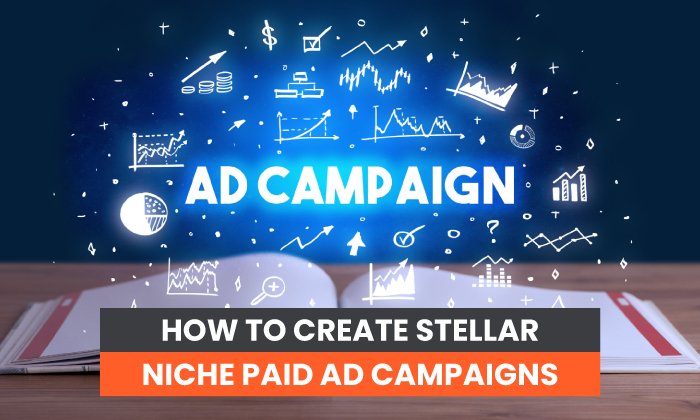
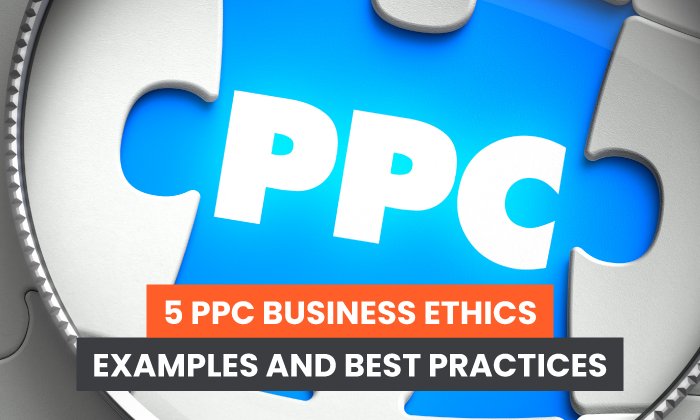
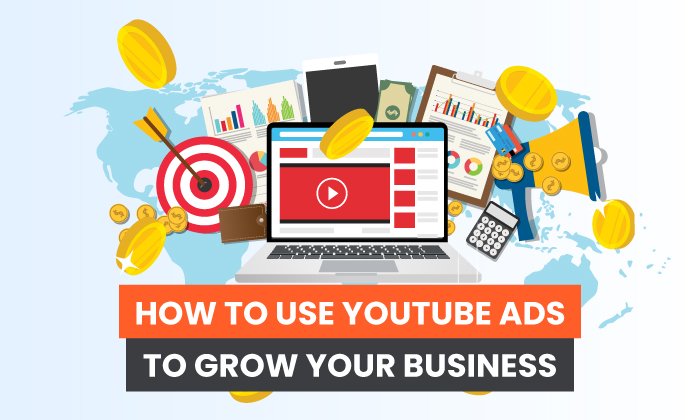
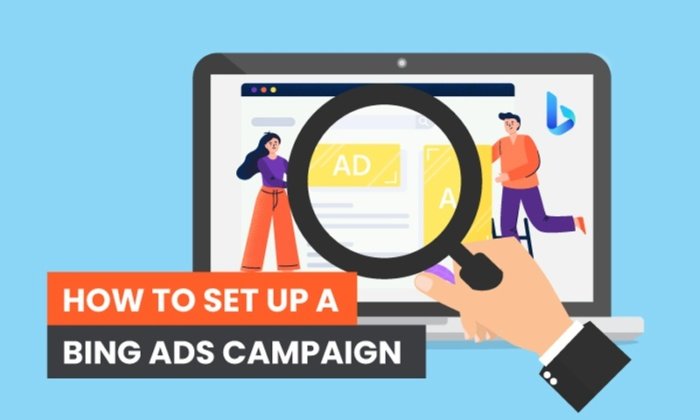



You must be logged in to post a comment Login